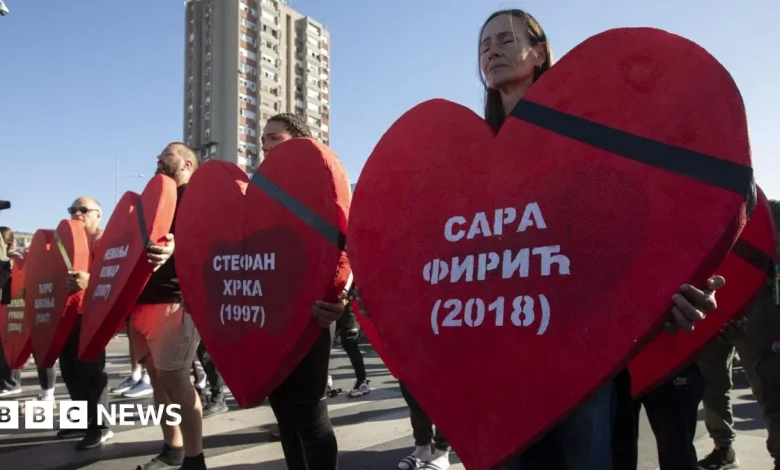Anger lingers in Serbia a year after train station tragedy

The student protesters’ approach has gained the respect of some opposition leaders.
“They showed integrity and perseverance,” says Biljana Djordjević, an MP and co-leader of the Green-Left Front.
“The new generation have found their way of participating, that is the difference this time. They have cut across generations in the families, we always wanted them to be more vocal, and now they are.”
Political scientist Srdjan Cvijić, from the Belgrade Centre for Security Policy, believes the students have cut through in a way that Serbia’s opposition parties simply could no longer do.
“Until last year, the regime had been effectively managing to render traditional politics disgusting to the overall population,” he says.
“They haven’t managed to do so with the student movement and the result is that the student movement has managed to pierce into the traditional electorate of the ruling party in a way that nobody previously managed to do.”
Perhaps this explains a sudden change in tone from President Vučić. He has generally taken a combative line with the protesters, accusing them of attempting a “colour revolution” – the kind of popular movements that were behind pro-European protests which toppled governments in European countries in earlier years.
These changes in former Soviet republics in the early years of the 21st Century pushed the likes of Georgia and Ukraine in a pro-EU direction.
But on the eve of the commemoration, Vučić apologised for his fiery rhetoric towards protesters, claiming that he had “said some things that I am now sorry for saying”.
The students responded dismissively. They told the president, “You have blood on your hands.”
This day may have been about respect and remembrance. But the anger remains.





